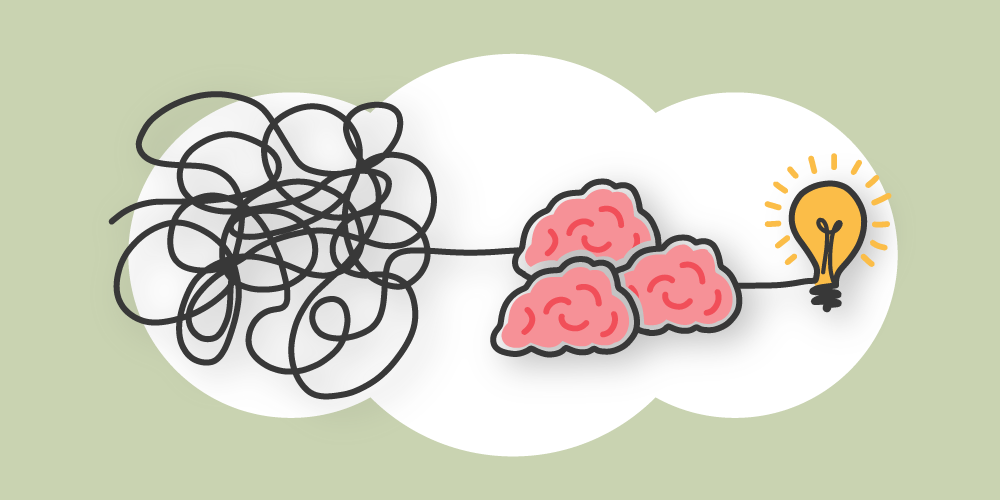About this content
What this content is: a collection of articles and PowerPoint presentations that provide new improvers (people interested in problem solving and process improvement) with an introduction to the problem solving framework for addressing simple and complex problems.
What this content is not: a comprehensive compendium for quality improvement. There are other resources available to understand the history and application of quality improvement principles and tools.
The objective for these lessons is to walk you step-by-step through a simple (PDSA) or complex problem as defined in the lessons.
How it works
Read the linked handouts and articles. Each handout and article has been selected because it provides a basic explanation and application of a problem solving principle or tool.
Watch the PowerPoint presentation recordings and videos. These short presentations provide definitions and explanations on how and why to use the problem solving framework.
Practice by doing. Using the material provided to guide you, follow each step to address a problem of your choosing. Only by doing can you really begin to understand how the problem solving framework is a guide for better, structured, quality improvement.
More Resoucres
Interested in learning more about Value, Quality Improvement, and Patient Safety?
Click here for a list of resources from University of Utah Health.
Click here for a list of resources from external health care organizations.
Objectives:
- Identify the problem solving framework and its role in quality improvement
- Discuss why writing a clear problem statement is the first step in starting a quality improvement project
Read:
- Accelerate Article - Quality Improvement (5 min.)
- Handout - Problem Solving (2 min.)
- Accelerate Article - What Goldilocks Can Teach You About Problem Statements (3 min.)
- Handout - Problem Statement (2 min.)
Watch:
- Problem Solving Framework (6 min.)
- Writing a Problem Statement (4 min.)
Practice: Write a problem statement for a problem you would like to solve
Objectives:
- Summarize why and how the baseline analysis step reinforces your problem statement and provides clarity and direction for your quality improvement project
- Describe 3 simple and easy methods for collecting baseline data, and how sterile processing and nutrition care use data to provide high quality service
Read:
- Accelerate article - Lean Behind the Scenes: Sterile Processing (2 min.) and watch the embedded video (7 min.)
- Accelerate article - Lean Behind the Scenes: Nutrition Care Services (7 min.)
- Accelerate article - Let the Process Map be Your Guide (3 min.)
- Handout - Baseline Analysis
- Handout - Fishbone Diagram
- Handout - Histograms and Run Charts
Watch: Conducting a Baseline Analysis (6 min.)
Practice: create a process map, a fishbone diagram, or plot a run chart/histogram for the problem you would like to solve
Objectives:
- Demonstrate how identifying and prioritizing the most likely causes of the problem will help support how to address the problem
- Illustrate how to create a simple fishbone diagram, and how asking why 5 times can be used to discover causes of a problem
- Discover how root cause analysis is used in reducing patient harm and promoting a culture of safety
Read: Accelerate Article - Fishbone Diagram: A Tool to Organize a Problem's Cause and Effect (2 min.)
Watch: Investigation and Root Cause Analysis (8 min.)
Read:
- Accelerate Article - Culture of Safety (4 min.) - in development
- Accelerate Article - Diagnostic Error (4 min.) - in development
- Accelerate Article - Systems Approach to Error (4 min.)
Practice: Develop a fishbone diagram for the problem you would like to solve
Objectives:
- Define how to develop a strong intervention (the change you will make that aims at solving the problem) by addressing the causes you identified in the previous step
- Compare commonly used practices and tools used to reduce variation and process improvement
Read:
- Accelerate Article - Draw On a Wide Range of Evidence to Jump Start Your Improvement Project (2 min.)
- Accelerate Article - Standard Work (3 min)
- Accelerate Article - The Seven Wastes in Health Care (5 min.)
- Handout - Value Added vs NVA
- Handout - Standard Work
- Handout - Forcing Functions
Watch:
- Intervention Design and Implementation (8 min.)
- Standard Work and Forcing Functions (6 min.)
Practice: Illustrate how you will address the problem you would like to solve, what change you will make and how you will implement it
Luca Boi
Ryan Murphy
Your gut tells you a process could be better than it is—how do you back that feeling up with hard data? Senior value engineer Luca Boi shows how undertaking a baseline analysis can jumpstart your improvement project.
Problems—we all have them. From the simple to the complex, they plague our daily work. Quality Improvement experts Luca Boi and Carolyn Brayko provide brief lessons and simple exercises on problem solving techniques so you can develop solutions and make improvements.
Senior Value Engineer Luca Boi considers the link between well-being and problem-solving by examining our impulse to “continuously cope” rather than “continuously improve.”
